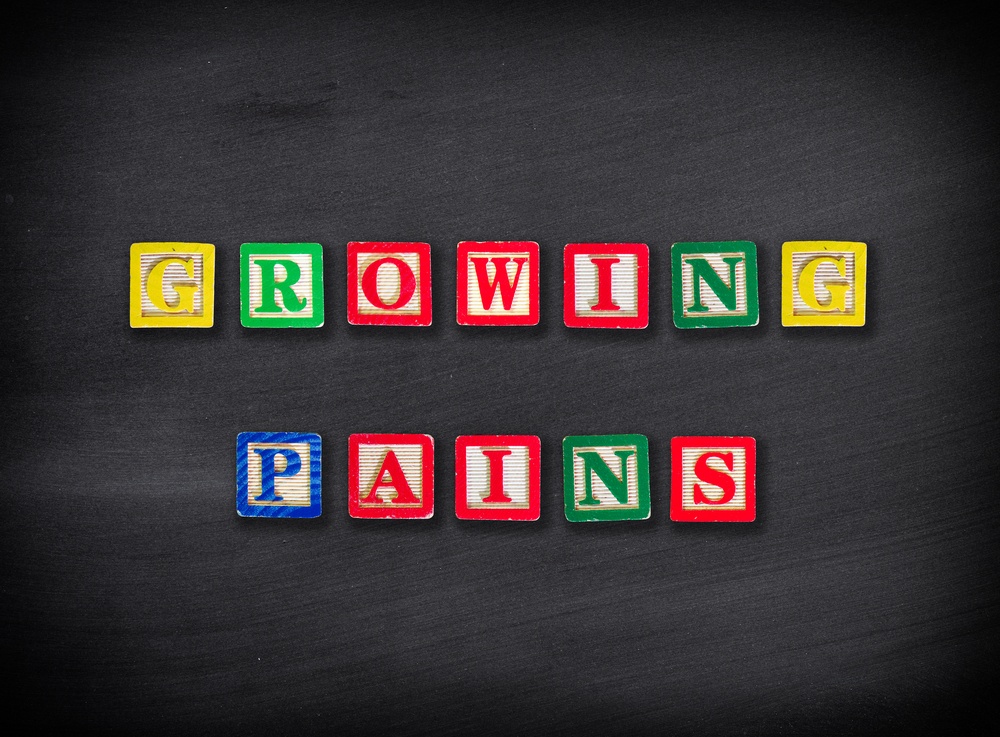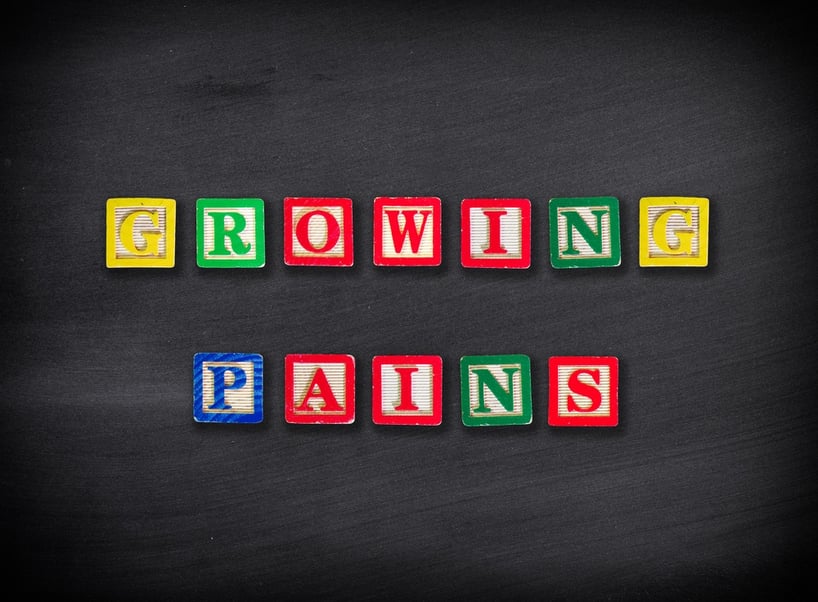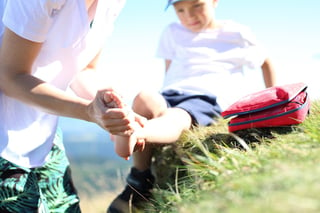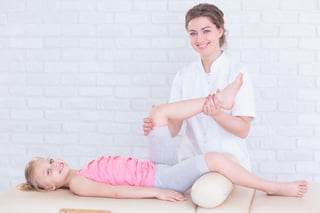What are Growing Pains? (Signs and Symptoms)
January 6th, 2017 | 4 min. read


“My legs hurt!” “My knees are sore!” If your child or pre-teen has complained of aches and pains, particularly in the afternoon or evening (or in the middle of the night), he or she may be experiencing what’s called “growing pains.”
Growing pains are common, affecting about 40% of school-aged children, and they are usually associated with growth spurts — but contrary to their name, they’re probably not caused by growth.
Growing pains explained
The soreness we refer to as growing pains, most commonly seen in preschoolers and pre-teens, are most likely the result of overuse injuries.
Running, jumping, climbing playground equipment (and leaping off it), and playing sports are high-impact activities that can  tax a developing body. These high-energy, high-stress activities may lead to muscle soreness, strains, or minor stress fractures. These injuries are usually harmless and self-healing, but they can be distracting and disruptive.
tax a developing body. These high-energy, high-stress activities may lead to muscle soreness, strains, or minor stress fractures. These injuries are usually harmless and self-healing, but they can be distracting and disruptive.
The truth is, nobody really knows for sure what causes growing pains. However, most experts agree that there’s no evidence to suggest that rapid musculoskeletal growth is cause. Even very fast growth spurts of a few inches in a few months are too gradual to cause pain.
Some evidence points to the possibility that middle-of-the-night growing pains could be related to restless leg syndrome. If RLS runs in your family, your child may have inherited the condition.
Other experts believe that the pain could be caused by tendons, ligaments, and muscles being stretched as the bones grow.
What growing pains feel like
What does it feel like to experience growing pains? They tend to occur in bouts that come and go. Aches don’t happen daily; they’re sporadic. Pain can be mild, moderate, or severe, depending on each child’s sensitivity level.
 During a typical bout, a child may complain of a throbbing or aching sensation in both legs — most often in the front of the thighs, the backs of the knees, or the calves. If your child is more sensitive to pain, she or he may experience headaches or abdominal pain, as well.
During a typical bout, a child may complain of a throbbing or aching sensation in both legs — most often in the front of the thighs, the backs of the knees, or the calves. If your child is more sensitive to pain, she or he may experience headaches or abdominal pain, as well.
This pain is most common and noticeable in the afternoon or evening, and sometimes the throbbing can wake the child from sleep in the middle of the night. Most of the time, the pain disappears by morning.
Growing pains can be distracting and uncomfortable. They can also cause insomnia or disrupt normal sleep cycles, which can lead to daytime sleepiness, difficulty staying awake in school, and problems sitting still in class or concentrating.
Growing pains are most commonly reported in legs (thighs and calves) and knees.
When do growing pains start?
Growing pains often begin in toddlers, at around ages 3 to 4 — during preschool years. Quite often, the pain disappears after a year or two, then returns during the pre-teen adolescent years, between the ages of 8 to 12. It’s slightly more common in girls than in boys.
Ruling out other causes of pain
If your child has been complaining of aches and pains, it’s important to tell a pediatrician. Most of the time, doctors can diagnose growing pains with a simple office exam.
Remember, abdominal pains or headaches are not necessarily cause for alarm; some sensitive children experience these along with the muscle soreness. These complaints may be completely normal. (However, it doesn’t hurt to see a doctor and rule out other issues!)
However, the presence of certain additional symptoms may point to other conditions that may benefit from treatment. Abnormal symptoms that may indicate an underlying problem can include:
- severe pain
- longer periods of consistent pain (all day, every day, rather than pain that comes and goes)
- pain that doesn’t disappear by morning
- achy joints
- swelling
- redness
- fever
- rashes
- weakness or exhaustion
- reduction in activity level
- pain that persists long after an injury has occurred
- limping
- loss of appetite
- weight loss
If your child is showing these symptoms in addition to feeling pain, call a doctor and schedule an appointment as soon as you can. To rule out an underlying condition or disease, your physician may wish to order a blood test or X-rays.
Possible alternate causes of pain could be:
- psychological issues
- restless leg syndrome
- leg cramping
- vitamin D or potassium deficiency
- juvenile idiopathic arthritis (JIA)
- fractures
- other bone diseases, like tumors (which are sometimes benign)
Treatment
Parents often ask pediatricians and orthopedists how to treat growing pains. These pains are a normal, natural part of child and adolescent development, and they usually last about a year or two at the most. They can’t be eliminated, but you can relieve discomfort with self-care techniques at home. Try:
- Gentle massage. Massaging the legs, particularly before bed, may help relax the muscles and relieve some of the pain. Using essential oils may help with this. (Check ingredients first, to avoid allergic reactions.)
essential oils may help with this. (Check ingredients first, to avoid allergic reactions.)
- Warm baths before bed. Warm water may relax tight muscles, improve blood flow, and lull a child, making her more likely to fall asleep.
- Heating pads. A warm cloth or heating pad applied to the sore muscles may help. Protect the skin from burning by applying heat over clothes, and remember to remove the heat source before going to sleep.
- Pain relievers. After consulting a doctor, you can give your child a low dosage of over-the-counter pain medication suitable for children: for example, ibuprofen or acetaminophen. Do not give a child aspirin, as aspirin has been linked to a potentially fatal disease called Reye’s syndrome.
- Stretching exercises. Stretching leg muscles gently may keep them from tightening up, which may help in preventing leg pain.
- Meditation or relaxation techniques (or distraction!). Some studies indicate that our perception of pain has a lot to do with how we experience its severity. If you can distract your child from paying attention to the pain, she may not notice it as much or affix as much importance to it. Guided meditation, listening to relaxing music, reading (or being read to), or participating in a calming activity like a board game may help to take your child’s mind off his achy muscles.
No one likes to see their child in pain, but remember: growing pains don’t last for more than a few years. Once your doctor has ruled out other causes, the best thing you can do for your child is to remind him or her that this is normal and that it will pass soon; it’s all a part of growing up.
To learn more about preventing and treating common gorowing pains, give Coastal Orthopedics located in Corpus Christi, TX a call. Telephone: 361.994.1166.
Article written by: Rob Williams, MD
Dr. Williams has been practicing orthopedic surgery in Corpus Christi since 1998. After graduating from Texas Tech hereceived his medical degree from the University of Texas at San Antonio. At the prestigious Campbell Clinic located at the University of Tennessee, Dr. Williams completed not only an Orthopedic Surgery Residency, but an additional year of Fellowship Training in Spine Surgery. Dr. Williams is dedicated to creating an excellent patient experience in the office or in the surgery suite.
Topics:

